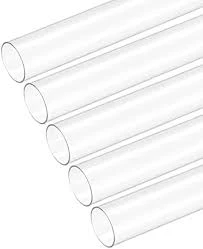डिस . 17, 2024 17:40 Back to list
High-Density Polyethylene Culvert Pipe for Reliable Drainage Solutions
High-Density Polyethylene (HDPE) Culvert Pipes A Comprehensive Overview
High-Density Polyethylene (HDPE) culvert pipes have become an increasingly popular choice in various infrastructure applications due to their excellent properties and performance characteristics. These pipes, made from high-density polyethylene resin, are known for their durability, resistance to chemicals, and ability to withstand harsh environmental conditions. In this article, we will delve into the key features, benefits, and applications of HDPE culvert pipes, along with insights into their installation and maintenance.
Key Features of HDPE Culvert Pipes
One of the primary characteristics of HDPE culvert pipes is their lightweight nature. This makes transportation and installation considerably easier and more cost-effective compared to traditional materials like concrete or metal. The flexibility of HDPE allows it to adapt seamlessly to different soil conditions and ground movements, reducing the risk of damage during extreme weather events.
Moreover, HDPE is highly resistant to corrosion and chemical deterioration. Unlike metal pipes that can rust or corrode over time, HDPE pipes maintain their structural integrity, leading to longer service life and reduced maintenance costs. Their smooth inner surfaces reduce friction, which enhances the flow of water and minimizes the risk of blockages.
Additionally, HDPE culvert pipes are available in various diameters and lengths, making them versatile for many construction scenarios. This adaptability ensures that they can be easily integrated into existing drainage systems or new construction projects, whether it’s for roadways, agricultural fields, or stormwater management systems.
Benefits of Using HDPE Culvert Pipes
The advantages of using HDPE culvert pipes are substantial, making them a preferable option in many situations. Firstly, their durability translates into lower lifecycle costs. Since they require minimal maintenance and have a long lifespan, the overall expense associated with repairs and replacements is significantly reduced.
Secondly, HDPE pipes are environmentally friendly. They are recyclable and can be reused, contributing to sustainability efforts. Using plastic pipes as an alternative to metal or concrete helps lower the carbon footprint associated with producing and installing traditional culverts.
Moreover, HDPE’s resistance to freezing temperatures and UV radiation ensures that the pipes retain their performance even under extreme conditions. In regions prone to heavy snowfall or intense sun exposure, HDPE culvert pipes prove to be a resilient choice.
hdpe culvert pipe

Applications of HDPE Culvert Pipes
HDPE culvert pipes are suitable for a wide array of applications, particularly in agriculture, civil engineering, and environmental management. They are commonly used for drainage, irrigation, and environmentally sensitive projects. In agricultural settings, they help manage water flow efficiently, preventing soil erosion and promoting healthier crop growth.
In urban areas, these pipes play a critical role in stormwater management systems. They are utilized to construct culverts that manage runoff effectively, thereby reducing flooding risks and providing safe passage for roadways and other infrastructure.
Additionally, HDPE culvert pipes find use in eco-friendly construction projects, such as restoration of natural habitats. Their installation minimizes disruption to the surrounding ecosystem, ensuring that wildlife can continue to thrive in their natural environments.
Installation and Maintenance
The installation of HDPE culvert pipes is relatively straightforward, often requiring less equipment and labor than traditional materials. Proper installation ensures optimal performance, and it’s crucial to adhere to local guidelines and standards.
Maintenance for HDPE culvert pipes is minimal, mainly focused on periodic inspections to check for blockages or sediment buildup. Regular maintenance guarantees that these pipes function efficiently throughout their lifespan.
Conclusion
High-Density Polyethylene culvert pipes represent a modern solution for effective water management in various sectors. Their lightweight, durable, and environmentally friendly characteristics make them an excellent choice for infrastructure projects aiming for sustainability and efficiency. As technology continues to advance, the adoption of HDPE pipes is likely to become more prevalent, paving the way for smarter and greener construction practices.
-
Durable Glossy PVC Rigid Sheet | Premium High-Shine Panels
NewsAug.26,2025
-
Durable PP Rigid Sheet: Lightweight, Chemical Resistant Solutions
NewsAug.21,2025
-
PVC Grey Sheet for Extraction: Chemical Resistant & Durable
NewsAug.19,2025
-
Durable PVC Pipe Fittings for Plumbing & Irrigation Needs
NewsAug.18,2025
-
HDPE Steel Belt Reinforced Spiral Corrugated Pipe | High Strength
NewsAug.17,2025
-
HDPE Pipe Fittings: Durable, Leak-Proof Solutions
NewsAug.16,2025

